In a case of first impression, a New York administrative law judge (ALJ) held that a taxpayer employed in New York who worked remotely from his Connecticut residence during the COVID-19 pandemic was subject to New York individual income tax under the “convenience of the employer” test.1 The ALJ decided that the taxpayer failed to meet his burden of proving that he worked outside New York due to his employer’s necessity. Where the services performed require an office, the fact that the taxpayer’s New York office was unavailable due to the pandemic did not mean that his out-of-state services were performed for the necessity of the employer. Thus, the ALJ concluded that the taxpayer must allocate to New York the income that he earned during the pandemic while working from home.
Background
The taxpayer is a resident of Connecticut who is employed as a professor by a law school located in New York City. For the 2019 and 2020 tax years at issue, the taxpayer sought a refund of individual income tax paid to New York for the days the taxpayer worked from his Connecticut residence. The taxpayer filed his New York State non-resident and part-year resident income tax return for the 2019 tax year and included the portion of his salary attributable to the days that he worked at home in Connecticut. On Sept. 25, 2020, the taxpayer filed an amended return seeking a refund of the tax for the 143 days the taxpayer worked outside New York during 2019.2 The New York State Department of Taxation and Finance did not respond to the refund request, but the request was deemed to be denied.
For the 2020 tax year, the taxpayer reported all his law school salary as New York source income, including the portion of his salary attributable to the days that he worked at home in Connecticut. From Jan. 1, 2020, until March 15, 2020, the taxpayer taught his classes in person at the law school in New York by commuting from Connecticut three days a week. Effective March 20, 2020, in response to the COVID-19 pandemic, New York’s governor issued an order requiring businesses to close their work locations and employees to work from home. From March 16, 2020, through Dec. 31, 2020, the taxpayer worked exclusively from his home and never physically went to New York to work. The taxpayer taught from his residence using an internet-based videoconferencing platform. During this time, the taxpayer did not have a classroom or office available to him at the New York campus. On July 24, 2021, the taxpayer filed an amended return for the 2020 tax year requesting a refund for the days that he worked from Connecticut.3 Most of the refund request was denied based on the New York convenience of the employer test. The taxpayer appealed the refund denials to the New York Division of Tax Appeals.
Convenience of the employer test
New York may tax a non-resident only on income that is “derived from or connected with New York sources.”4 If a non-resident employee performs services both within and outside New York, the portion of the employee’s income derived from New York sources is the ratio of total days worked in New York to total days worked both in and out of the state.5 The apportionment and allocation are limited by the convenience of the employer test, which provides that “any allowance claimed for days worked outside New York State must be based upon the performance of services which of necessity, as distinguished from convenience, obligate the employee to out-of-state duties in the service of his employer.”6 Non-residents employed in New York who work outside the state when not required by their employer to do so must treat these days as if they had been present in New York, resulting in New York source income.7
Prior litigation
The taxpayer previously challenged New York’s convenience of the employer test. During the 1994 and 1995 tax years, the taxpayer spent three days a week working at the law school in New York and two days a week working from his residence in Connecticut. In applying the test, the Department determined that the days the taxpayer worked at his Connecticut residence should be counted as New York workdays because he worked from home for his own convenience and was not obligated by his employer to work outside New York. The portion of his salary that he allocated to the days he worked at home also was taxed by Connecticut, which did not provide a credit for the taxes assessed by New York. The taxpayer argued that application of the convenience of the employer test to him, resulting in New York taxing his salary earned on the days he worked at home, violated the dormant Commerce Clause and Due Process Clause of the U.S. Constitution.
In 2003, following a series of decisions denying the taxpayer’s claims, the New York Court of Appeals upheld the convenience of the employer test as applied to the taxpayer (Zelinsky I).8 For purposes of the dormant Commerce Clause challenge, the taxpayer relied on the fair apportionment prong of the test provided by the U.S. Supreme Court in Complete Auto Transit, Inc. v. Brady.9 The court determined that the tax was fairly apportioned because it was both internally and externally consistent. The taxpayer conceded the internal consistency test was met because he would not be subject to double taxation if every state were to impose an identical tax. In rejecting the taxpayer’s argument that the external consistency test was violated, the court held that the New York tax did not exceed the value fairly attributable to economic activity within the taxing state. The court also held that the Due Process Clause was not violated because the taxpayer: (i) had at least a “minimum connection” with New York because he was employed in the state; and (ii) received protections, opportunities, and benefits from New York.
Income from days worked in Connecticut subject to New York tax
The ALJ determined the income that the taxpayer received from the law school for the days that he worked from home in Connecticut was subject to New York income tax for the 2019 and 2020 tax years.
Income earned in 2019
The taxpayer acknowledged that the income earned from the New York law school was fully taxed as New York income for the 2019 tax year under the convenience of the employer test but argued that application of this test constituted extraterritorial taxation of a non-resident in violation of the dormant Commerce Clause and Due Process Clause. Because the taxpayer stipulated that his work situation in the 2019 tax year was the same as it was in the 1994 and 1995 tax years at issue in Zelinsky I, the ALJ was required to follow the prior decision. Based on the analysis from Zelinsky I, the ALJ determined that the dormant Commerce Clause and Due Process Clause were not violated.
Income earned in 2020 during the pandemic
The taxpayer argued that the convenience of the employer test did not apply to the period when the law school was closed due to the pandemic. Even if the test did apply, the taxpayer alleged that the income must be allocated to Connecticut due to measures taken in response to the pandemic. The ALJ acknowledged that “[a]s the facts and effects of the COVID-19 pandemic are unprecedented, this is an issue of first impression.” According to the ALJ, the fact that the law school did not provide accommodations but instead allowed the taxpayer to work out-of-state at his home did not constitute necessity or requirement by the law school.
In support of his argument, the taxpayer cited a 1979 case in which the court held that the performance of some of an employee’s duties in New Jersey was for the necessity of his employer and allocation of all of that employee’s income to New York was not proper despite the fact these services could have been performed in New York.10 However, the 1979 case was unique because the employee built specialized facilities at his residence in New Jersey to perform his job, and was distinguishable from the instant situation involving the use of a home office. There was no specialized equipment needed that would prevent the taxpayer from performing his duties in New York. The ALJ explained that the state order requiring that employees work from home due to the pandemic cannot result in a special tax benefit to those who do not live in the state, but work for a New York employer.
The taxpayer also argued that the income earned during the pandemic was not New York source income because he did not enter the state during this period. In rejecting this argument, the ALJ noted that the taxpayer was physically present in New York during the first part of 2020 and continued his position with the New York law school. Also, the ALJ noted that the taxpayer was remotely connected to the law school and had a virtual presence in New York when teaching his classes over the internet. Based on South Dakota v. Wayfair, Inc.11 the ALJ concluded that a taxpayer may be present in a state through internet technology without being physically present in the state. The ALJ rejected the taxpayer’s constitutional arguments for the 2020 tax year in the same manner as for the 2019 tax year. The taxpayer offered no evidence that the law school required him to perform any work outside New York. The ALJ also rejected the taxpayer’s arguments that MeadWestvaco Corp. v. Illinois Department of Revenue12 and Comptroller of Treasury v. Wynne13 eroded the holding in Zelinsky I.
Commentary
New York’s convenience of the employer test is controversial and has generated litigation over the years, as evidenced by the taxpayer’s prior unsuccessful challenge to this provision. As noted by the ALJ, this is a case of first impression concerning the application of the New York test to the period when many work locations were closed due to the pandemic. Because the taxpayer’s work arrangement in 2019 was admittedly very similar to his work arrangement in 1994 and 1995, it is not surprising that the ALJ followed the 2003 decision for the 2019 tax year.
The facts for the 2020 tax year, however, are substantially different from prior years due to the pandemic. Unlike previous tax years, the taxpayer could not possibly work at the New York law school because the facilities were closed. The New York government required offices to close and employees to work from home if possible. The taxpayer was following the government’s orders by working from home and not going to New York to work. While the law school did not require the taxpayer to work from Connecticut, the government mandate instructed people to work from their homes. The ALJ’s conclusion that the taxpayer could have worked from a New York location other than the law school is difficult to reconcile with the massive governmental restrictions on engaging in any forms of travel during the heart of the pandemic. It also stands in contrast to precautionary measures taken by individuals, and encouraged by many employers, to essentially shelter in place.
Beyond this issue, the position that teaching a course and meeting with students on an internet videoconference platform is sufficient to establish a presence in the state in which the taxpayer’s employer is located is far from settled. While it is certainly possible to be present in a state without physical presence if an in-state market is sufficiently targeted, the taxpayer’s overall activities were performed entirely outside New York. Further, the taxpayer’s teaching activities were directed to students, many of whom may not have been physically located in New York (either because they were nonresidents forced to return to their home states, or because they temporarily moved outside New York during the pandemic).
Given the history of the convenience of the employer rule, the taxpayer’s insistence that such rule should not apply, and the extraordinary circumstances of the pandemic, the taxpayer is expected to appeal this decision through the New York administrative and court systems. It will take a significant amount of time to resolve the issue of whether a pandemic-related shutdown can alter the effect of the convenience of the employer rule on nonresident employees. Moreover, this decision may have far-reaching implications beyond New York to the extent it could influence controversies between states concerning the taxation of nonresident employees during the pandemic, and in a post-pandemic hybrid work environment. In addition to the tax liability and wage withholding issues for nonresidents who work for New York employers on a remote or hybrid basis, this case may affect other states such as Delaware and Pennsylvania that have convenience of the employer rules. In July 2023, New Jersey enacted legislation creating a convenience of the employer rule if a New Jersey nonresident employee works for a New Jersey employer and is a resident of a state which has a similar convenience of the employer rule.14 For tax years beginning in 2020 through 2023, the New Jersey legislation provides a tax credit to encourage taxpayers to challenge other states’ convenience of the employer rules.
Finally, it should be noted that a prior attempt to gain clarity on this issue in a controversy between the states of Massachusetts and New Hampshire was unsuccessful. In that case, Massachusetts adopted a temporary emergency regulation that allowed the state to tax the income of nonresident employees who worked in the state prior to the pandemic, but who were teleworking during the pandemic.15 In response, the border state of New Hampshire, which does not impose a personal income tax, asked the U.S. Supreme Court to rule on whether Massachusetts may constitutionally tax non-residents working in New Hampshire and lacking a connection with the taxing state during the pandemic.16 The U.S. Supreme Court ultimately declined to review this case.
1 In re Zelinsky, New York Division of Tax Appeals, Administrative Law Judge Unit, DTA Nos. 830517, 830681, Nov. 30, 2023. This case was filed by the nonresident taxpayer and his wife. For the sake of simplicity, this SALT Alert references the taxpayer employed by the New York law school and does not discuss his wife.
2 The taxpayer spent these days at his residence in Connecticut performing legal research and writing as well as administrative tasks.
3 In 2020, the taxpayer worked in New York 24 days prior to the pandemic and worked from his Connecticut home for 207 days during the pandemic.
4 N.Y. Tax Law §§ 601(e)(1); 631(a)(1).
5 N.Y. Comp. Codes R. & Regs. tit. 20, § 132.18(a).
6 Id.
7 Zelinsky v. Tax Appeals Tribunal, 801 N.E.2d 840 (N.Y. 2003).
8 Id.
9 430 U.S. 274, 279 (1977). Under this four-part test, a tax satisfies the dormant Commerce Clause if it: (i) is applied to an activity with a substantial nexus with the taxing state; (ii) is fairly apportioned; (iii) does not discriminate against interstate commerce; and (iv) is fairly related to the services provided by the state.
10 Fass v. State Tax Commission, 414 N.Y.S.2d 780 (N.Y. App. Div. 1979), aff’d, 409 N.E2d 998 (N.Y. 1980).
11 138 S. Ct. 2080 (2018).
12 553 U.S. 16 (2008).
13 575 U.S. 542 (2015).
14 N.J. A.B. 4694, Laws 2023. For further discussion of this legislation, see GT SALT Summary: New Jersey enacts convenience of the employer rule.
15 Mass. Regs. Code tit. 830, § 62.5A.3, expired Sept. 13, 2021.
16 New Hampshire v. Massachusetts, 141 S. Ct. 2848, motion for leave to file bill of complaint denied, June 28, 2021.
Contacts:
Tax professional standards statement
This content supports Grant Thornton LLP’s marketing of professional services and is not written tax advice directed at the particular facts and circumstances of any person. If you are interested in the topics presented herein, we encourage you to contact us or an independent tax professional to discuss their potential application to your particular situation.
Nothing herein shall be construed as imposing a limitation on any person from disclosing the tax treatment or tax structure of any matter addressed herein. To the extent this content may be considered to contain written tax advice, any written advice contained in, forwarded with or attached to this content is not intended by Grant Thornton LLP to be used, and cannot be used, by any person for the purpose of avoiding penalties that may be imposed under the Internal Revenue Code.
The information contained herein is general in nature and is based on authorities that are subject to change. It is not, and should not be construed as, accounting, legal or tax advice provided by Grant Thornton LLP to the reader. This material may not be applicable to, or suitable for, the reader’s specific circumstances or needs and may require consideration of tax and nontax factors not described herein. Contact Grant Thornton LLP or other tax professionals prior to taking any action based upon this information.
Changes in tax laws or other factors could affect, on a prospective or retroactive basis, the information contained herein; Grant Thornton LLP assumes no obligation to inform the reader of any such changes. All references to “§,” “Sec.,” or “§” refer to the Internal Revenue Code of 1986, as amended.
Trending topics


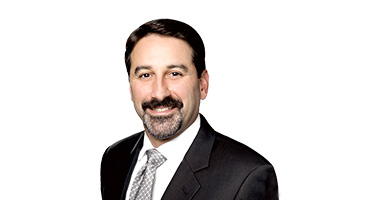




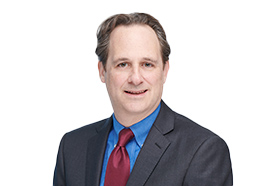
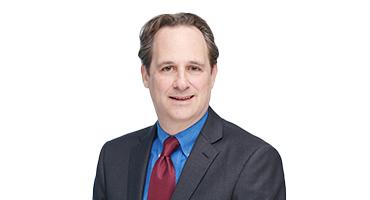

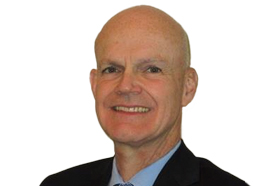
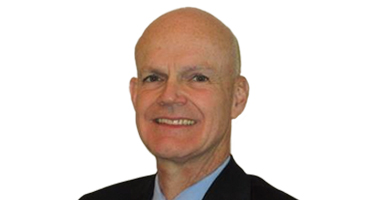

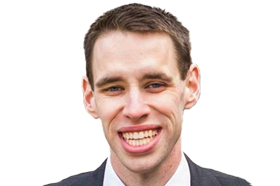
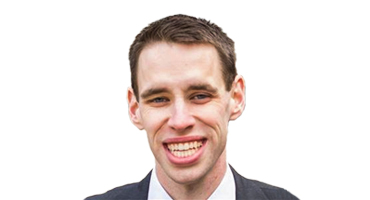
Share with your network
Share